Abstract
Looking at data on the expansion and contraction of cultivated land in Japanese agriculture, the trends as of 2022 are as follows. First, regarding the total expansion, the maximum expansion nationwide is 2,840 hectares, which is thought to be due to new development and reuse of farmland. On the other hand, the total amount of abandoned farmland nationwide has decreased by up to 16,700 hectares, the main factor behind this is thought to be the abolition and conversion of farmland. This trend suggests that while farmland is being consolidated and rationalized in line with urbanization and agricultural sophistication, in some areas new farmland is being developed and reused. As there is a need to promote sustainable agriculture while maintaining a balance between the expansion and contraction of farmland, it is important that policies and initiatives are tailored to the characteristics and needs of each region.
Rice field expansion plan (main data).
Looking at data on rice field expansion in Japanese agriculture, we can see trends from 1956 to 2022. The largest expansion was recorded in 1968, covering 47.8 thousand hectares across the country. However, it has now fallen to 5.94% compared to its peak. This is thought to be the result of a decrease in demand for farmland due to urbanization and industrial development, as well as the conversion and development of farmland. This trend is particularly influenced by the decline in the agricultural population and the increasing efficiency of agriculture through sophistication. The decline in total farmland expansion is due to different factors in each region, suggesting the need for agricultural policies and regional development measures. Future challenges will include efforts to promote sustainable agriculture and conserve farmland.
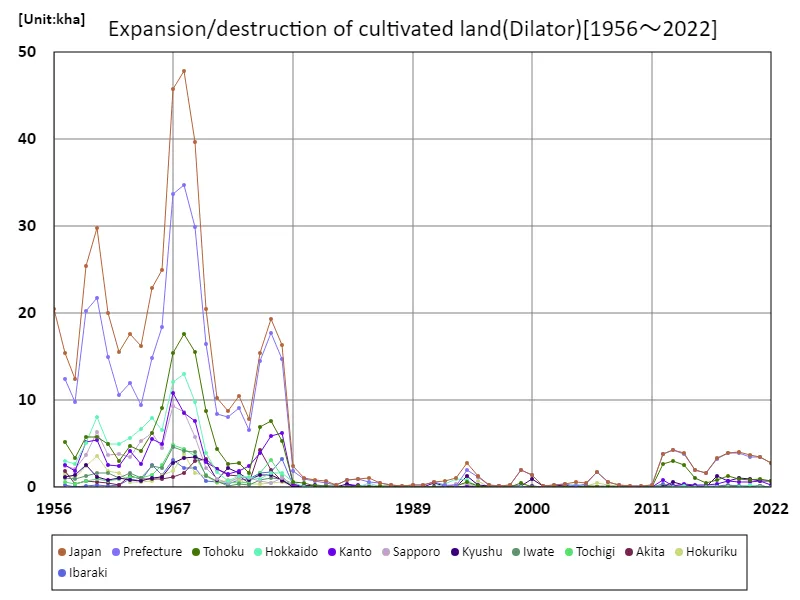

The maximum is 47.8kha[1968] of Japan, and the current value is about 5.94%
Total rice field expansion (by prefecture).
In Japan’s agriculture in 2022, attention is being focused on plans to expand and abandon cultivated land. Looking at data by prefecture, the largest area overall is in Miyagi Prefecture, at 336 hectares, which is the most recent recorded value. This figure is significantly higher than that of other prefectures, suggesting that there is active movement to expand and reuse farmland in Miyagi Prefecture. On the other hand, in other regions, abandonment may be more prevalent than expansion. When interpreting these trends, it is also important to take into account regional agricultural demand and characteristics, as well as the impact of government agricultural policies. In areas where expansion is occurring, there is a high possibility that agricultural promotion and revitalization of the local economy are being promoted. On the other hand, in areas where waste management is predominant, farmland may be being lost due to urbanization and industrial development. Generally speaking, the expansion and abandonment of farmland is caused by factors that vary from region to region, and policies and initiatives that are tailored to the characteristics and needs of each region are required. Efforts to promote sustainable agriculture and conserve farmland will become increasingly important in the future.
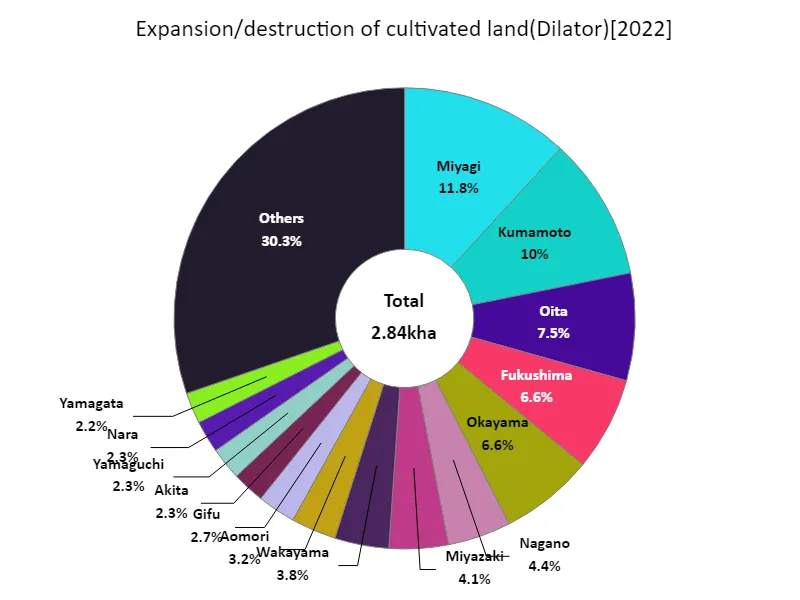

The maximum is 336ha of Miyagi, the average is 60.5ha, and the total is 2.84kha
Rice field waste disposal data (main data).
Analysis of data on rice field irrigation and deforestation in Japanese agriculture reveals trends from 1956 to 2022. The largest scale of deforestation was recorded in 1974, covering 74,000 hectares nationwide. However, it has now fallen to 22.6% of its peak. This trend is thought to be the result of reduced demand for farmland due to urbanization and industrial development, as well as increased efficiency due to more advanced agriculture. In particular, the decline in the agricultural population and changes in the agricultural business environment are having an impact on the decline in agricultural waste. Factors such as a shortage of agricultural workers and management rationalization may be influencing trends in agricultural abandonment. Waste trends vary from region to region due to different factors, so measures and support tailored to the characteristics and needs of each region are necessary. Preserving farmland and promoting sustainable agriculture remain important issues.
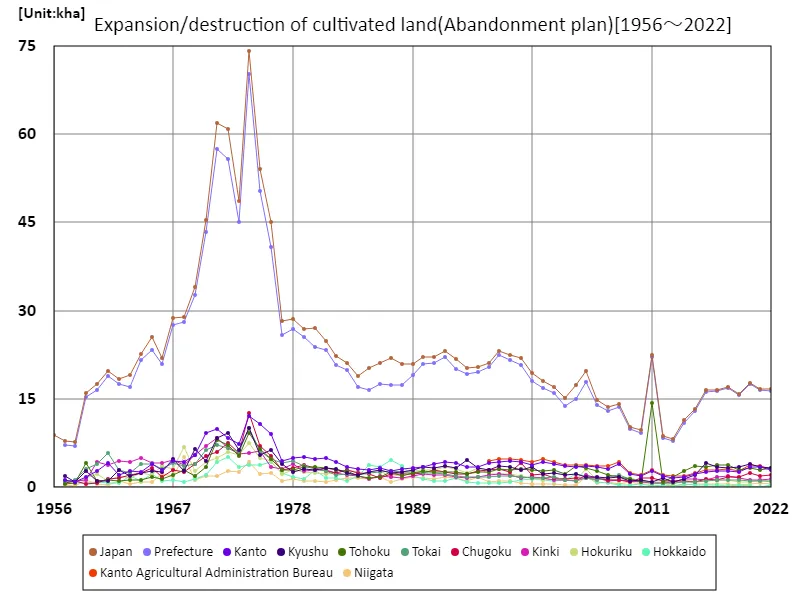

The maximum is 74kha[1974] of Japan, and the current value is about 22.6%
Total amount of abandoned rice fields (by prefecture).
Considering the latest data from 2022 on the abandonment of cultivated land in Japanese agriculture, the largest overall amount recorded was 1,540 hectares in Kumamoto Prefecture. This figure is the highest ever, indicating that farmland waste is increasing nationwide. The background to this trend includes the advancement of agriculture and increased efficiency through technological innovation, as well as the expansion of agricultural scale and intensifying competition between regions. Additionally, changes in the agricultural management environment, such as population decline and a shortage of agricultural labor, may also be contributing to the increase in waste disposal. On the other hand, some regions are implementing policies and initiatives to promote agriculture and conserve farmland, and some regions are moving in the direction of curbing waste. However, while the amount of farmland being abandoned is increasing, the conservation of farmland and the promotion of sustainable agriculture have become urgent issues. Generally speaking, the abandonment of farmland is influenced by a wide range of factors, including regional economic conditions, agricultural policies, and farm management strategies, and each region has its own unique characteristics and challenges. In the future, in order to realize sustainable agriculture, policies and support tailored to the needs of each region will be necessary.
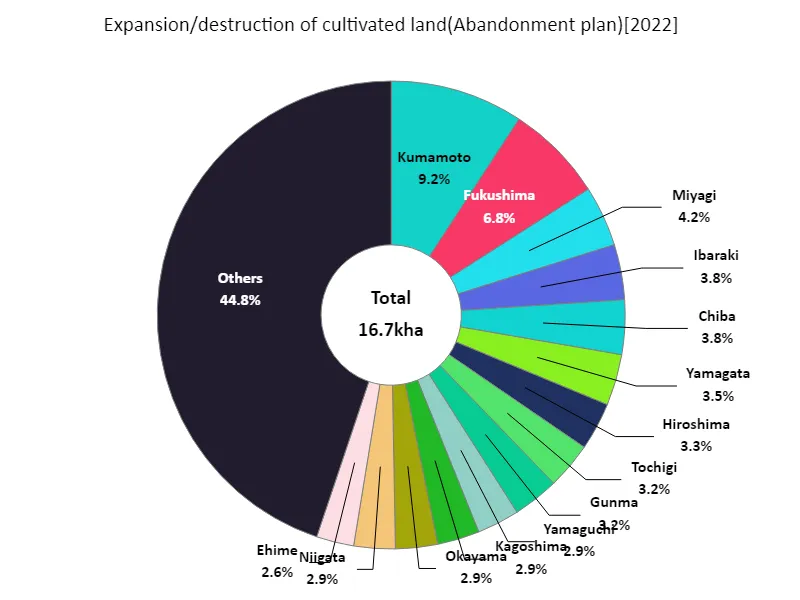

The maximum is 1.54kha of Kumamoto, the average is 356ha, and the total is 16.7kha
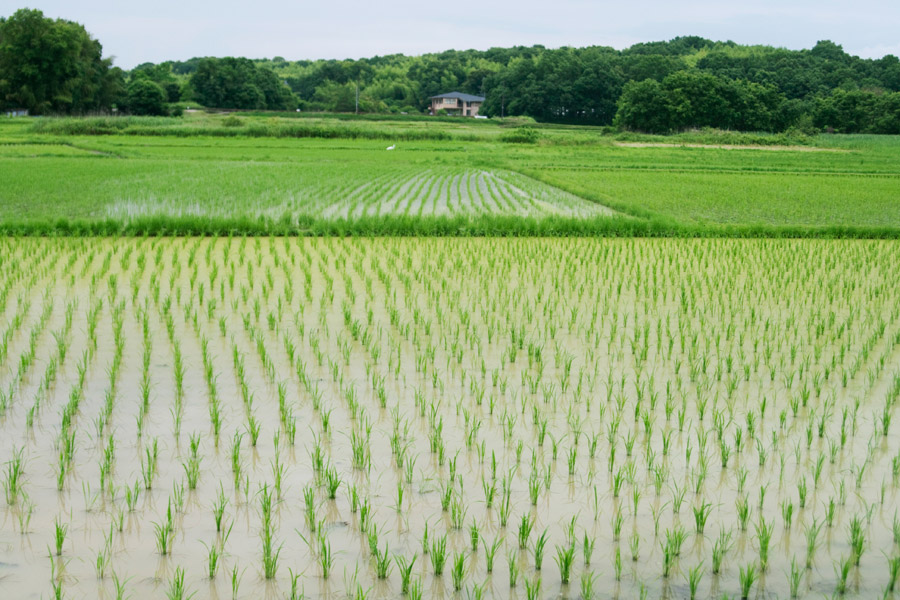


Comments